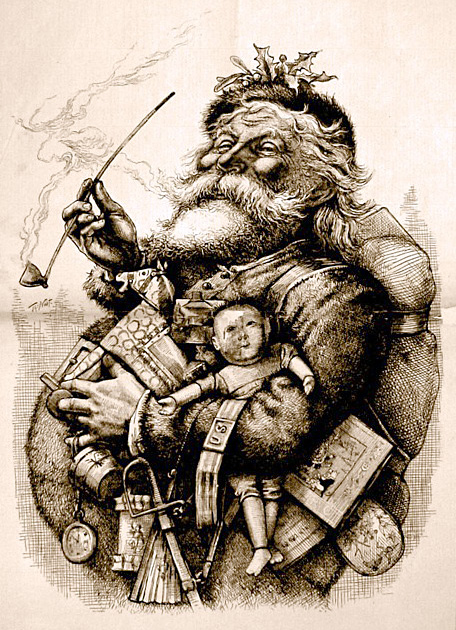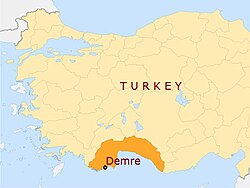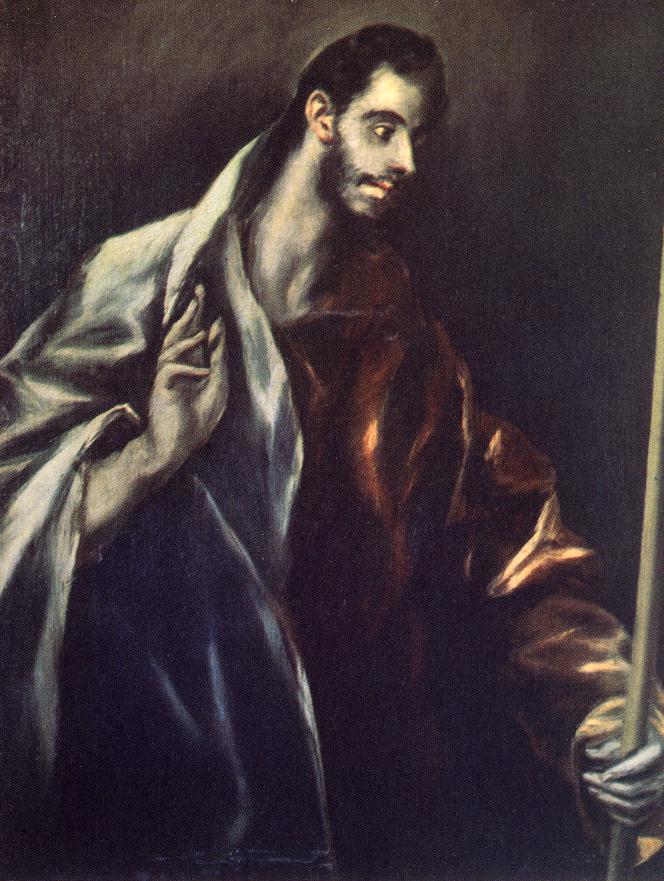
The REAL Saint Nicholas, in the process of saving “three innocents from death…”
* * * *
As noted this time last year, “Christmas is only a few days away. But first comes the Feast day of Thomas the Apostle, on December 21. And Thomas – in [a] way – serves as a metaphor for all us ‘Doubters.'” See On “Saint Doubting Thomas” – 2017. From December 22, 2017.
 That Feast day came after last December 6 – about a week ago – which was the Feast day for the REAL “Jolly Ol’ Saint Nick.” See There really IS a “Saint Nick” (Virginia), from December 9, 2017. But first another “but first:” Not only did I just publish a new E-book, there’s now a paperback version. It’s available from Lulu.com. (Under the Shop link, and under my nom de plume, “James B. Ford.”)
That Feast day came after last December 6 – about a week ago – which was the Feast day for the REAL “Jolly Ol’ Saint Nick.” See There really IS a “Saint Nick” (Virginia), from December 9, 2017. But first another “but first:” Not only did I just publish a new E-book, there’s now a paperback version. It’s available from Lulu.com. (Under the Shop link, and under my nom de plume, “James B. Ford.”)
Which is another way of saying that last Thursday, December 6, was the Feast day for Nicholas of Myra, in the Daily Office lectionary. Then the upcoming Friday, December 21, is the Feast day for St. Thomas, Apostle. (And of course the 12 Days of Christmas are coming up as well.)
Which brings us back to last year’s posts from about this time:
Wednesday, December 6 [in 2017], was the Feast day for the REAL “Jolly Ol’ Saint Nick.” He was Saint Nicholas of Myra, and he lived from 270 to 340 A.D. So when Dr. Philip O’Hanlon told his daughter, “Yes Virginia, there is a Santa Claus,” he was telling the truth… Or at least the truth as that term is defined in today’s politics.
 You can see more about this prototype in There really IS a “Saint Nick.” That Real St. Nicholas saved three innocent men – shown in the painting at the top of the page – who’d been wrongly sentenced to death by a corrupt official. That corrupt ruler of Myra – today’s Demre, Turkey – accepted bribes to sentence the men to death. But this first St. Nick was not to be intimidated by the “power of others, especially the power of the corrupt.” He “stormed into the prefect’s office and demanded that the charges against the three men be dropped:”
You can see more about this prototype in There really IS a “Saint Nick.” That Real St. Nicholas saved three innocent men – shown in the painting at the top of the page – who’d been wrongly sentenced to death by a corrupt official. That corrupt ruler of Myra – today’s Demre, Turkey – accepted bribes to sentence the men to death. But this first St. Nick was not to be intimidated by the “power of others, especially the power of the corrupt.” He “stormed into the prefect’s office and demanded that the charges against the three men be dropped:”
That corrupt official eventually “confessed his sin and sought the saint’s forgiveness. Nicholas absolved him, but only after the ruler had undergone a period of repentance.” Which leads to this thought: “Boy, we could sure use him today!!!”
Other stories told of Nicholas of Myra’s “love for God and for his neighbor.” Like providing dowries for three poor unmarried daughters. (Thus saving them from a life of prostitution.) Or of three children killed and “pickled” by a butcher – during a time of extreme famine – who planned “to sell them off as ham.” But Nicholas of Myra both “’saw through the butcher’s horrific crime’ and resurrected the three children from the barrel.”
 That brings us to the feast day for the “original Doubting Thomas,” a term which refers to a “skeptic who refuses to believe without direct personal experience.” But as noted last year, that’s exactly what going to church and reading the Bible is supposed to provide: An opportunity for a direct and personal experience with the Force that Created the Universe. See also The Bible and mysticism, which said Christianity is all about “obtaining unity with God, through Christ.”
That brings us to the feast day for the “original Doubting Thomas,” a term which refers to a “skeptic who refuses to believe without direct personal experience.” But as noted last year, that’s exactly what going to church and reading the Bible is supposed to provide: An opportunity for a direct and personal experience with the Force that Created the Universe. See also The Bible and mysticism, which said Christianity is all about “obtaining unity with God, through Christ.”
So a mystic and a Christian both seek a “direct personal experience with God.:
In plain words there are two sides of the Christian experience: The “corporate” or business side, and the “mystical” side. The problem is that so many Christians get hung up on the “business side” of the Christian faith. Mainly because it’s so much easier… But it’s only the mystical side that can lead to a direct personal experience with God, and Thomas the Apostle is a reminder that – hard as that may be – it can be done….
So here’s wishing you a happy “real St. Nick” and “first Doubting Thomas” Day…
* * * *

Thomas the Apostle, as envisioned by El Greco (in about 1612…)
* * * *
The upper image is courtesy of Saint Nicholas – Wikipedia, the free encyclopedia, with the caption: “Saint Nicholas Saves Three Innocents from Death (oil painting by Ilya Repin, 1888, State Russian Museum).” See also St. Nicholas Center … Saint Who Stopped an Execution.
The lower image is courtesy of Apostle St Thomas by GRECO, El – wga.hu. For more on Thomas and his missionary journeys, see Doubting Thomas’ “passage to India.”
* * * *